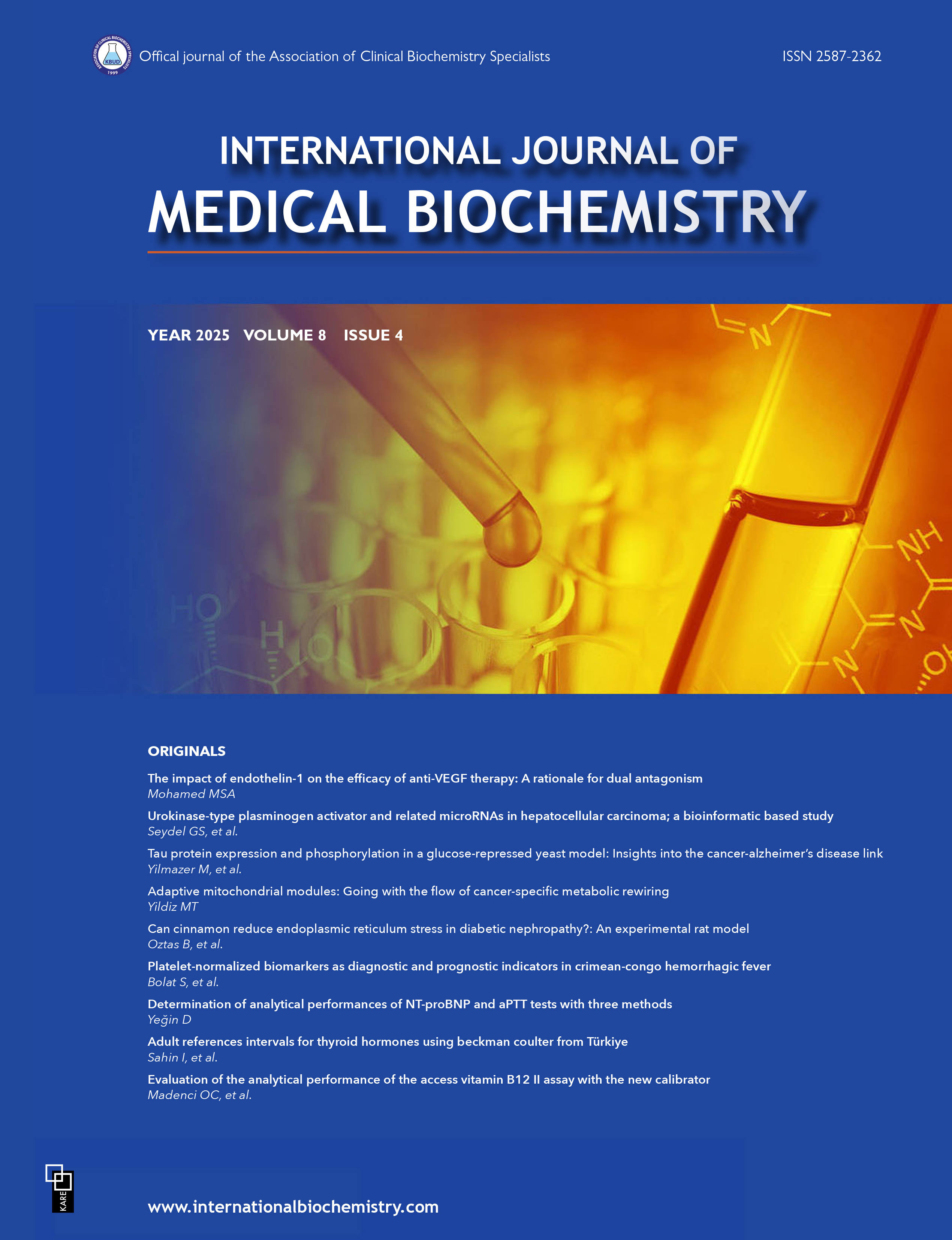Evaluation of the analytical performance of 80 parameters analyzed in routine biochemistry laboratory by process sigma methodology
Mehtap Esen1, Suleyman Caner Karahan2, Asim Orem2, Yuksel Aliyazicioglu2, Hatice Bozkurt Yavuz31Clinical Biochemistry Laboratory, Bayburt State Hospital, Bayburt, Türkiye2Department of Medical Biochemistry, Karadeniz Teknik University Faculty of Medicine, Trabzon, Türkiye
3Department of Medical Biochemistry, Uşak University Faculty of Medicine, Uşak, Türkiye
INTRODUCTION: The Six Sigma methodology is also frequently used by clinical laboratories as an objective and quantitative way to measure quality. In our study, we aimed to evaluate the analytical performance of 80 tests using the Six Sigma methodology according to the CLIA (Clinical Laboratory Improvement Amendments) 2019, RICOS BV (Dr. Carmen RICOS Biological Variation) Desirable, and EFLM BV (European Federation of Clinical Chemistry and Laboratory Medicine Biological Variation) Desirable criteria.
METHODS: The sigma values of 80 tests were calculated according to the TEa (Total Allowable Error) limits allowed by all
three references using internal quality control and external quality control data. They were calculated monthly for 12 months, and the annual average was taken. Sigma values were calculated with the Six Sigma formula.
RESULTS: Considering the total number of goals reached, the highest success rate of 60% was achieved according to the CLIA goals, while the lowest success rate of 36% was obtained according to the EFLM BV Desirable criteria. Although exactly the same laboratory data are used, this gap between the sigma values obtained according to the selected reference is especially noticeable in tests such as Na (Sodium), K (Potassium), Cl (Chloride), Calcium, HbA1c (Hemoglobin A1c), and Troponin T.
DISCUSSION AND CONCLUSION: The Six Sigma protocol is one of the effective and universal tools for evaluating the performance of clinical laboratories. However, one of its biggest limitations is the lack of standardization in tolerance limits. The obtained performance varies according to the preferred reference. Therefore, we think that in the Six Sigma methodology, it is more feasible to select Total Allowable Error criteria from different references according to their suitability for the test.
Keywords: Biological variation, CLIA 2019, quality control, RICOS BV, six sigma, total allowable error
Manuscript Language: English







